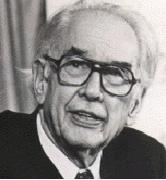| Key Words |
Software architecture; component-and-connector view;
software evolution; dynamic reconfiguration; ADL; context-oriented
software development |
| Abstract |
In software architecture the dynamic structure of a software
system can be described in terms of components and connectors
and expressed through the use of Architectural Description
Languages (ADLs). We present jADL, a new ADL, designed for
the creation and validation of dynamic and mobile architectures.
It, also, aims to help towards the process of “unifying” the
definition and implementation of an architecture in a way that the
final result is consistent with the architecture in terms of both
functional requirements and quality attributes. In this paper, we
examine into details the definition and expression of jADL’s architectural
elements; components, connectors, ports, roles and
behaviour describing statements – attach, detach, config, bind. The
attributes of synchronicity and multiplicity concerning the connections
between architectural elements are presented. A special case
of connections is presented – the bind statement and the construction
of composite architectural elements. Also, a case study of the
client-server dynamic model in jADL is presented and the possibilities
of jADL for dynamic reconfiguration are explored. |
| Article PDF | Download article (PDF) |



